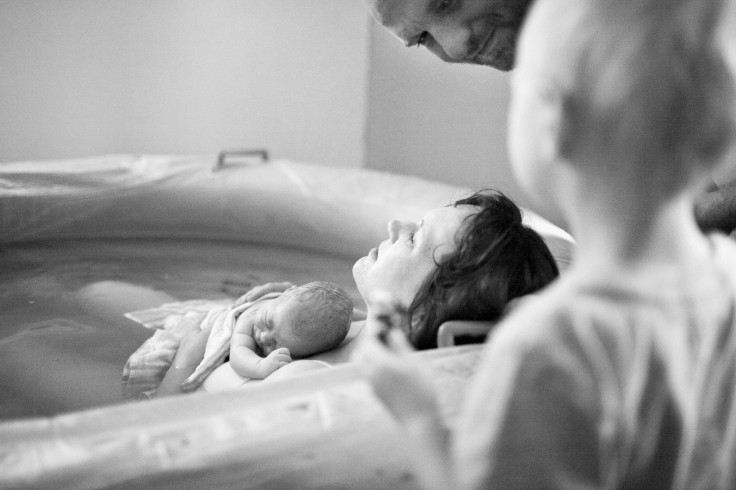From Cesarean Delivery To Death, The Pros And Cons Of Giving Birth Inside And Outside Of A Hospital

Ninety-nine percent of babies are born in hospitals across the United States, yet still 1 percent of babies a born outside of a hospital and a new study reveals the risk behind the parents’ decision. Researchers from Oregon Health & Science University compared the health risks of giving birth inside a hospital to outside a hospital setting. Perinatal death, in which the mother has a stillbirth or the baby dies within the first year of life, can be one of the greatest fears for a mother as she gives birth to a child, and giving birth outside of a hospital carriers a higher risk of occurrence, which is why a mother must carefully weigh out her options before her due date.
"While the overall risk for perinatal death was low in all settings, the stakes can be high," said the study’s co-author Dr. Aaron B. Caughey, dean for Women's Health Research and Policy in the OHSU School of Medicine, in a press release. "As health care providers, we need to make sure women know what the trade-offs are so they can make an informed choice that reflects their birth preferences."
For the study, published in the New England Journal of Medicine, Caughey and his colleagues analyzed data collected from Oregon birth certificates between 2012 and 2013. It gave them information on the mothers and babies like what kind of birth setting the mother intended when she was in labor, what setting she actually gave birth in, risk level of the birth, due date, whether or not there were twins or triplets, and babies rate of survival. Researchers found women who gave birth outside of a hospital were at higher risk of having their baby die of perinatal death. But women who gave birth inside of a hospital setting were at a higher risk of having a cesarean delivery or needing obstetric interventions such as induction or other methods to induce a stalled labor.
"There is now consensus in the medical and midwifery communities that the U.S. C-section rate is too high, and the desire to avoid a C-section may shape women's choices when seeking out-of-hospital birth," said the study’s co-author Ellen Tilden, certified nursing midwife and assistant professor at OHSU School of Nursing, in a press release. "It's really important that we strive to make birth safer in any setting, both through decreasing fetal and neonatal morbidity and mortality out of the hospital but also through supporting safe vaginal birth in hospitals."
The cesarean section rate was significantly lower for women who planned to give birth outside of the hospital—24.7 percent of births were delivered cesarean in a hospital compared to 5.3 percent On the flipside, planned hospital births had significantly more mothers with high blood pressure and diabetes. outside of the hospital. While perinatal deaths were rare occurrences in and outside of the hospital, mothers who gave birth outside of a hospital according to plan were still at a statistically significant higher risk. Newborn seizures were also rare in both settings, but still higher in births given outside of the hospital according to plan. Mothers were more likely to need a blood transfusion if they gave birth out of the hospital as well.
“While those who deliver at home or in birth centers are much more likely to have a normal, vaginal delivery, there is also a small but statistically significant increase in risk for adverse baby outcomes,” said the study’s lead author Jonathan M. Snowden, an epidemiologist and assistant professor in the Department of Obstetrics and Gynecology in the OHSU School of Medicine, in a press release. “ It is important to recognize that we all — families, birth attendants, and policymakers — share the common goal of helping birth occur with the best possible outcomes for all."
Source: Snowden JM, Tilden EL, Snyder J, Quigley B, Caughey AB, and Cheng YW. Planned Out-Of-Hospital Birth and Birth Outcomes. New England Journal of Medicine. 2015.



























